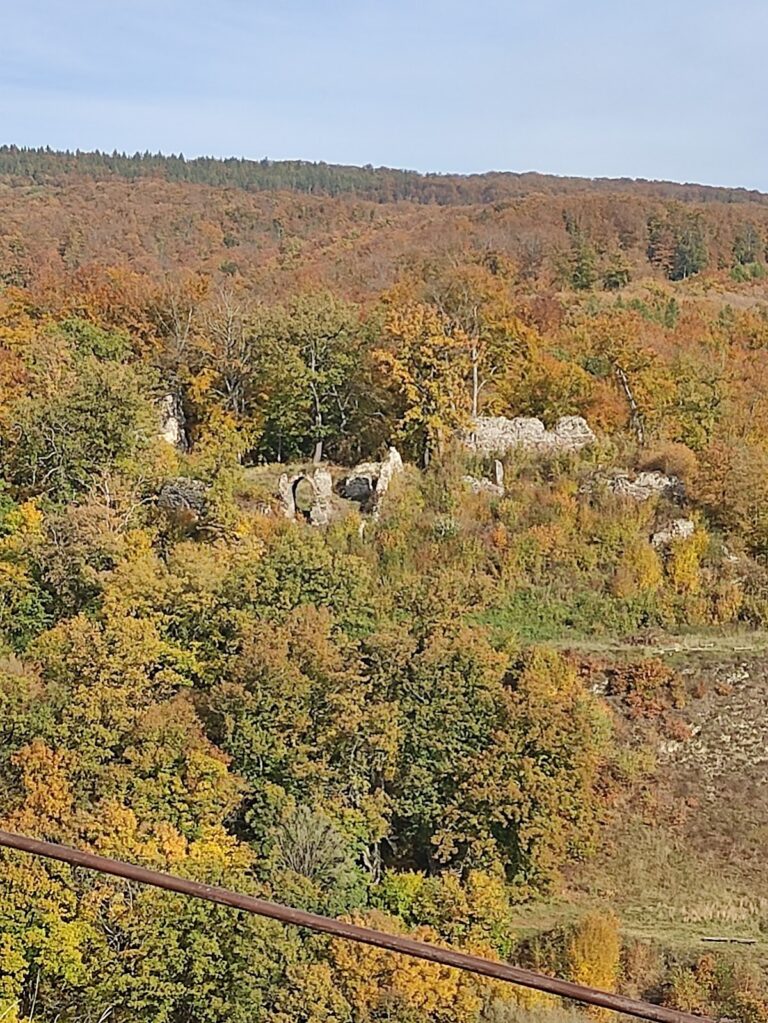Grillenburg: A Medieval Castle Site in Sangerhausen, Germany
Visitor Information
Google Rating: 4.4
Popularity: Low
Google Maps: View on Google Maps
Country: Germany
Civilization: Unclassified
Remains: Military
History
Grillenburg is a medieval castle site located near the village of Grillenberg in the municipality of Sangerhausen, Germany. It was constructed by the German knights of the High Middle Ages, reflecting the feudal structures of the region.
The earliest mention of the village of Grillenberg dates back to the Hersfeld tithe register around 880 or 890, but the castle itself does not appear in records until 1217. The first known reference to the castle comes from this date when a nobleman named Tidericus de Grellenberch is recorded as a vassal to the Archbishopric of Magdeburg. This suggests that the fortress was likely established near the beginning of the 13th century, around 1200, serving as a small but strategic stronghold in the territory.
Throughout the 13th and 14th centuries, Grillenburg functioned as a ministerialis castle, guarded and managed by knightly families such as the Muser and the von Morungen. These families acted as Burgmannen, or castle marshals, with documented presence dating back to 1286. The castle’s position was significant during regional disputes, particularly during the Halberstadt Bishops’ Feud, a conflict lasting from 1325 to 1358. In 1362, control of Grillenburg transferred to the Counts of Mansfeld following military action.
Ownership of the castle shifted several times over the following centuries. In 1347, Frederick the Serious, the Margrave of Meißen, obtained the estate from the Duke of Brunswick. By 1366, Duke Magnus of Brunswick was the lord of Grillenburg, overseeing not only the castle but also exercising authority over nearby religious institutions such as Sittichenbach Abbey. Later, in 1485, the property passed to Elector Ernest of Saxony before eventually returning to the Counts of Mansfeld.
The von Morungen family held Grillenburg as vassals at least since 1483, maintaining control until the death of George of Morungen in 1547. After this, the castle’s ownership reverted to the Saxon Amt (administrative district) of Sangerhausen. By the mid-16th century, evidence indicates the castle was already in decline. Over the next several decades, it fell into ruin and was considered abandoned well before the start of the 17th century.
Remains
The ruins of Grillenburg cover an elongated area measuring approximately 200 meters in length and 70 meters wide. The site features the remains of the central stronghold known as the Kernburg or core castle. Among these are the foundational walls and defensive structures that once formed the heart of the fortress.
One defining feature is the shield wall, or Schildmauer, constructed to provide added protection. Part of the castle’s defenses also included a zwinger, an enclosed outer ward designed to act as a killing ground against attackers who penetrated the outer defenses. A neck ditch, or Halsgraben, cut into the terrain serves as a dry moat, enhancing the castle’s fortification by creating a barrier on the hilltop.
The lower wall sections exhibit large rusticated stone blocks called buckelquader, which are typical of Romanesque construction dating to around 1200. These sizable stones formed the sturdy base of the castle’s earliest walls. Subsequent building phases, evident in the 14th century, introduced brick masonry as part of structural reinforcement or expansion, reflecting evolving architectural techniques of the medieval period.
Perched on a hill roughly 312.5 meters above sea level, the castle commands views over the village situated about 350 meters southwest. The location within what is now the Harz/Saxony-Anhalt Nature Park and the adjacent Pölsfeld gypsum karst nature reserve would have offered both strategic surveillance and natural protection.
Nearby, approximately 100 meters to the east of the main ruins, lies a probable fieldwork or counter-fortification known as a Schanze. This earthwork feature is believed to have been built during the 1362 military contest when the Counts of Mansfeld captured the castle. Its position and construction likely served as an additional defensive outpost or a temporary fortification during the conflict.
Today, the castle remains are fragmentary but clearly visible, providing tangible links to its history as a medieval stronghold governed by shifting noble families and involved in regional political struggles. The successive building phases, defensive arrangements, and associated landscape features reveal the complex history of Grillenburg through its changing functions and changing ownership.










